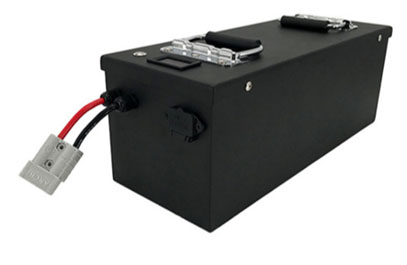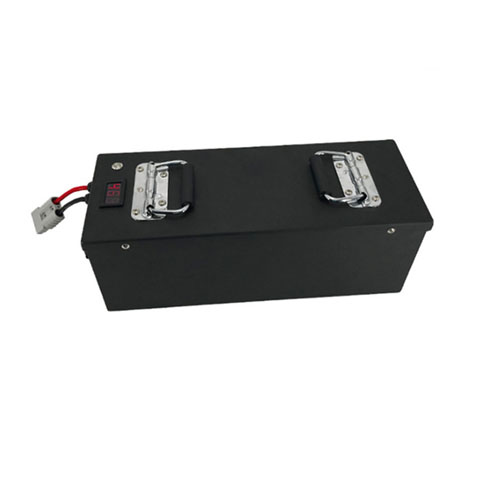AGV battery and its types:
Automated guided vehicle batteries are those batteries that charge the AGV system. The multitude of functions calls for the use of AGVs. Transporting unprocessed commodities like metal, plastic, rubber, or paper are applications for these vehicles. For example, AGVs may move raw materials from where they are received to where they are stored, or they can transfer items straight to the manufacturing lines.
AGV systems use four main types of batteries which are as follows:
- Lithium Batteries
- Flooded Lead Acid
- Sealed Gel
- AGM Pure-Lead
Sealed gel batteries:
A gel battery is a lead-acid battery that is valve controlled. Such a kind of battery is called a sealed gel battery. After being combined with sulfuric acid and silica, the electrolyte transforms into a gel-like material that is relatively unmovable. This gel combination enables the AVG battery to use the acid and electrolyte in the same manner as with a conventional lead-acid battery, but without the additional maintenance required.
There are different advantages of sealed gel which are as follows:-
- Because the batteries constitute gel rather than liquid, there is very little to no maintenance required to maintain the battery functioning effectively.
- Even though wet cell batteries are encased in plastic and shut off from the outside world, there is still a possibility that they may leak.
- Gel batteries come equipped with a valve that lets out excess pressure.
- When a conventional lead-acid battery is damaged, you confront a labor-intensive and potentially hazardous operation (not to mention the impact on anything the battery acid may come into contact with during the process).
- Gel batteries do not have fluids that may leak out. There is a decreased danger of harm coming to the equipment.
- The fact that wet cell batteries are very vulnerable to excessive vibration and other kinds of impacts is a concern about these batteries.
- Gel batteries are excellent for high-impact applications such as four-wheelers because of their ability to dampen vibrations and absorb shock. Because of this, there is less of a need for ventilation.
- When working with a wet cell battery, it is essential to avoid letting the battery lose too much of its charge as quickly as possible. In such a case, it will never be able to recharge. The situation is not the same with gel cell batteries. Because they are deep cycle batteries, they can take drain before needing to be recharged yet still perform as if they were brand new.
The price tag of a gel battery is very substantial, which has many advantages offered by such a battery. When you have to charge your gel battery, you should anticipate needing to give it more time than usual. These batteries are known to have slow charging cycles, but you can’t just leave them to charge while you’re not there. You will need to remove it from the charger soon after charging because it is a gel, not a liquid. Leaving it on might result in cavities in the electrolyte, which would be irreparable harm. Heat management is a significant limitation shared by almost all types of batteries.
Lithium batteries:
Lithium batteries are an excellent choice for extreme demands on their components. These AGV battery have a tough shell, are resistant to water, and have a battery management system to handle this circumstance. They are finding increasing applications in a wide variety of fields, ranging from applications requiring low power, such as their incorporation into small electronic designs requiring low power, to much larger applications requiring higher current, such as the use of batteries for electric vehicles or batteries for PV systems, also known as solar panel systems. Lithium-ion batteries are poised to assist this need, which is to expand as dependence on batteries. These days, nickel-cadmium cells and batteries are not in use because of the damage they bring to the environment. Nickel-metal hydride cannot offer the amounts of charge necessary for many different applications.
Flooded lead acid:
The most popular kind of deep cycle solar battery is flooded lead-acid batteries. It is also known as “wet cell” lead-acid batteries. It has been used for many decades, is easily comprehended, and is the solar storage battery with the lowest upfront cost (though Lithium-ion solar batteries are more cost-effective over time). During the charging cycle, flooded lead-acid AGV battery will lose some water content. For them to continue functioning effectively and for you to maintain your health, they need frequent refilling with distilled water. Take note that you should only use distilled water. Their specific energy is low. It is possible to charge it slowly, and a completely saturated charge will take between 14 and 16 hours to complete. To avoid salvation, it must be in a charged stage for storage. It has a finite number of cycle lives.
AGV pure lead batteries:
Pure Lead Acid AVG Battery is the name given to a secondary battery that has a lead purity level of 99.9 percent throughout all of its plates. Due to the refining process that takes place during production, the very high purity of this battery drives up its price, but it also contributes to the battery’s performance and the normal length of its lifespan. When depleted to 80 percent of its capacity before being recharged, this battery has an expected lifespan of around 8 to 10 years. This is almost twice as long as the typical lead-acid batteries. Traditional lead-acid batteries have thicker plates, but the plates in this battery are thinner, providing a greater surface area and, as a result, superior power to weight ratio.
Conclusion:
Different batteries are used to charge the AGV system. Among all batteries, lithium batteries are the best. The AVG batteries also have the longest life span of any other battery. You can contact J&Y technology for long-lasting AVG batteries.



